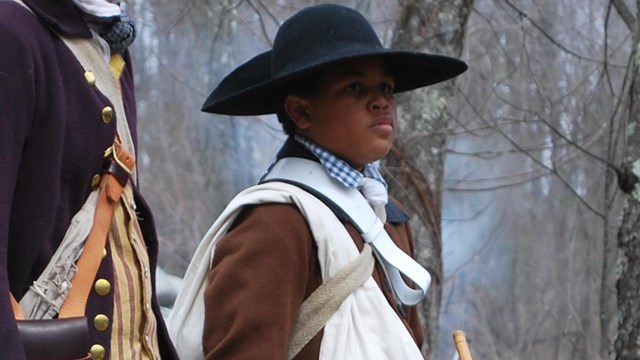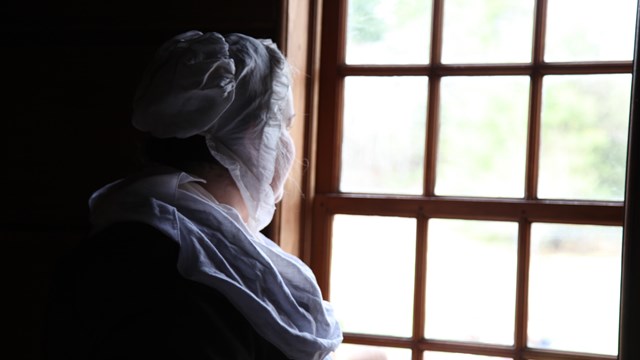|
Historical Context:
After months of preparations, General Thomas Gage, commanding the British garrison in Boston initiated a plan to deprive the rebellious provincials of their means to wage war. On the night of April 18, 1775, Gage dispatched over 800 British Regulars to Concord, Massachusetts in an attempt to seize and destroy large stockpiles of military goods being collected there.
In his orders to Lt. Colonel Francis Smith, Gage wrote “Having received intelligence, that a quantity of Ammunition, Provision, Artillery, Tents and small arms, have been collected at Concord, for the Avowed Purpose of raising and supporting a Rebellion against His Majesty, you will March with the Corps of Grenadiers and Light Infantry, put under your command, with the utmost expedition and Secrecy to Concord, where you will seize and destroy all artillery, Ammunition, Provisions, Tents, Small Arms, and all Military Stores whatever. But you will take care that the Soldiers do not plunder the inhabitants, or hurt private property.”
The colonists had also prepared for any sign of British movement and were ready. Watchful men in Boston noticed British soldiers leaving their barracks late at night and mustering on Boston Common. Patriot leader, Dr. Joseph Warren dispatched Paul Revere and William Dawes to ride out to Lexington to warn Samuel Adams and John Hancock of the impending expedition. The Boston men also flashed signal lanterns from the steeple of the Old North Church to alert Committee of Safety members and militia officers in Charlestown. As Revere and Dawes rode toward Lexington, they alarmed many communities along the way, who also sent out additional riders. With scores of riders spreading the alarm that night and into the next morning, thousands of Massachusetts militia soldiers marched in response.
Around 10:00 pm hundreds of British soldiers began assembling on Boston Common. From there they boarded boats and crossed the river to Cambridge. The operation took hours, and it wasn’t until after 1:00 am that the column started to move. As they marched, the Regulars could hear the sounds of alarm around them: Bells ringing and guns firing. One British officer, Lt. William Sutherland, noted that he heard several shots “between 3 & 4 in the morning (a very unusual time for firing).” Realizing that secrecy was no longer on his side, Lt. Colonel Smith sent word back to General Gage asking for reinforcements. In the meantime, with the sounds of alarm making the soldiers in his column nervous, Smith pressed on toward Concord.
For Smith’s soldiers, the route of march passed through the town of Lexington where members of the town’s militia company formed on the green. As the dawn spread, Smith’s vanguard of the British column hurried onto the green in an effort to disperse the rebels. The militia company’s commander, Captain John Parker, ordered his men to disband but a sudden gunshot rang out from an unknown source. Despite Gage’s orders not to harm the inhabitants, the nervous British soldiers, believing they had been fired upon, opened fire on the retreating militia. Eight militiamen were killed and ten wounded. They were first of many colonists to fall that day.
Following the carnage on the Lexington green, the British continued toward Concord. They entered town around 7:30 a.m. and began to search for arms and military supplies. A detachment numbering more than 100 Regulars also marched over the Concord River and headed to the farm of Militia Col. James Barrett. Gage had provided detailed instructions to search this farm for the brass cannon stolen from gun houses in Boston the previous September. Meanwhile, a large force of militia gathered on the ridges around town, observing the British movements and hoping to avoid bloodshed. When a plume of smoke appeared over the town the militia forces feared the worst. After a short meeting the Militia officers concluded to march into Concord and discover the source.
As the militia force nearing 400 men approached Concord’s North Bridge around 9:30 a.m. three companies of British soldiers (96 men) guarded the river crossing. In a chaotic and desperate scene, the British soldiers opened fire on the militia killing two men and wounding a few others. Militia Major John Buttrick then gave the famed order to return fire. In a matter of seconds twelve British soldiers were hit, including 4 officers. Three enlisted men died. They were the first British casualties of the war. Lexington was a tragedy; The fight at Concord’s North Bridge was treason.
By noon Lt. Colonel Francis Smith regrouped his column and secured the wounded. Their mission to Concord had uncovered very few military supplies and now thousands of militiamen closed in on his position with no sign of the reinforcements he sent for earlier. With few options, Smith decided it was time to begin the 18-mile journey back to Boston. The rear guard of the British column barely made it a mile and a half out of Concord center when minute man companies from Reading, Chelmsford, and Billerica attacked the Regulars. From Meriam’s Corner, the British had to fought their way through swarms of minute and militia companies freshly arriving to the field with every passing mile. As one exasperated British officer put it “Their numbers increasing from all parts while ours was reducing by deaths, wounds and fatigue...” In his later report Smith noted that the gunfire came “from behind the walls, ditches, trees, &c., which, as we marched increased to a very great degree, and continued without intermission of five minutes altogether, for, I believe, upwards of eighteen miles…”
The fighting along what came to be known as the “Battle Road” grew more intense as the day wore on. Although thousands of white, black, and indigenous men marched to the scene of conflict, thousands more non-combatants acted to protect themselves and their families from harm. Many persons along the Bay Road chose to evacuate their families to safer locations. Those with loyalist inclinations fled toward the city of Boston as those with Patriot sentiments fled away.
When the battered British column reached Lexington around 3:00 p.m. their reinforcements finally arrived consisting of 1000 men and two 6-pounder cannon commanded by Brigadier General Hugh Earl Percy. For Smith’s column, the arrival of those reinforcements staved off a total collapse of the British retreat. As Percy later wrote “I had the happiness of saving them from inevitable destruction.”
After a brief rest, the reinforced column with Percy now in command, resumed its march to Boston. In the town of Menotomy (Arlington) the fighting turned into horrific urban combat with the vast majority of casualties occurring during this stretch of the engagement. Near Cambridge, Percy feared a militia trap at the great bridge crossing back into Boston. In one last attempt to save the battered men, Percy detoured the British column north where they crossed over Charlestown neck around 7:00 p.m. and the fighting came to a conclusion. In total, 273 British soldiers were killed, wounded or missing. The colonists suffered 95 casualties. By day’s end, nearly 4000 minute men and militia engaged in combat.
Among those who fought on April 19, 1775 were nearly 40 Black or Indigenous men. Officially barred from militia training, many served with their town’s alarm list or accompanied their enslaver to the field of battle. Others, like Peter Salem and Jeffery Hemmenway of Framingham enlisted in their town’s minute man company as volunteers. Though their previous petitions for freedom to the Massachusetts legislature were unsuccessful, many men of color still turned out and risked their lives standing shoulder to shoulder with their white neighbors. To them, the cause of liberty was perhaps even more dear.
April 20, 1775, brought a world turned upside down. The dead and dying lay strewn along the road from Concord to Boston where a greater siege operation was underway. In all, some 20,000 colonial soldiers arrived and set up for a siege of Boston. Soldiers from Connecticut, New Hampshire, Rhode Island, Pennsylvania, Virginia, and Maryland soon joined those from Massachusetts. During the first weeks of the siege, the fighting also spread outside the colony of Massachusetts. Provincial forces launched raids on British military instillations along the great lakes including Fort Ticonderoga, and Crown Point.
Daily artillery bombardments became a normal facet of life for soldiers on the siege lines, while small raids outside the earthworks accomplished little. In May, two small battles occurred on Grape Island and along Chelsea Creek. During the latter, a British naval ship pursuing Militia forces inland grounded in Chelsea Creek during low tide. After a midnight battle, Militia forces captured the vessel and burnt it to the waterline.
During the early stages of the siege, provincial militia officers such as Dr. Joseph Warren attempted to reason with General Gage to no avail. With each passing day, the prospect of reconciliation grew weaker and the strength of the provincial army greater.
Barker, John., Dana, Elizabeth Ellery. The British in Boston: Being the Diary of Lieutenant John Barker of the King's Own Regiment from November 15, 1774 to May 31, 1776. Cambridge: Harvard University Press, 1924.
Cain, Alexander. We Stood Our Ground. N.p.: INDEPENDENTLY PUBLISHED, 2018.
Coburn, Frank Warren. The Battle of April 19, 1775: In Lexington, Concord, Lincoln, Arlington, Cambridge, Somerville and Charlestown, Massachusetts. Lexington MA: The Author, 1912.
Duke of Northumberland, Hugh Percy. Letters of Hugh, Earl Percy, from Boston and New York, 1774-1776. Boston: C.E. Goodspeed, 1902.
Emerson, William. Diaries and Letters of William Emerson, 1743-1776: Minister of the Church in Concord, Chaplain in the Revolutionary Army. N.p.: n.p., 1972.
Fischer, David Hackett. Paul Revere's Ride. Oxford NY: Oxford University Press, USA, 1994.
French, Allen. The Day of Concord and Lexington, the Nineteenth of April, 1775. Boston: Little, Brown, 1925.
Gilbert, Alan. Black Patriots and Loyalists: Fighting for Emancipation in the War for Independence. Chicago and London: University of Chicago Press, 2012.
Kehoe, Vincent J-R.. We Were There! April 19th 1775. Chelmsford MA: V. J-R Kehoe, 1974.
Kehoe, Vincent J-R.. We Were There, April 19th 1775: The British Soldiers. Chelmsford MA: Vin Kehoe Enterprises, 1974.
Mackenzie, Frederick. A British Fusilier in Revolutionary Boston: Being the Diary of Lieutenant Frederick Mackenzie, Adjutant of the Royal Welch Fusiliers, January 5-April 30, 1775, with a Letter Describing His Voyage to America. Cambridge MA: Harvard University Press, 1926.
Massachusetts Militia Companies and Officers in the Lexington Alarm. United States: Society of Colonial Wars in the Commonwealth of Massachusetts, 1976.
Ripley, Ezra. A History of the Fight at Concord: On the 19th of April, 1775, with a Particular Account of the Military Operations and Interesting Events of that Ever Memorable Day; Showing that Then and There the First Regular and Forcible Resistance was Made to the British Soldiery, and the First British Blood was Shed by Armed Americans, and the Revolutionary War Thus Commenced. Concord MA: Allen & Atwill, 1827.
Sabin, Douglas P.. April 19, 1775: A Historiographical Study. N.p.: Sinclair Street Publishing, LLC, 2011.
Sumner, William Hyslop. A History of East Boston: With Biographical Sketches of Its Early Proprietors, and an Appendix. Boston: J. E. Tilton, 1858.
Tourtellot, Arthur Bernon. William Diamond'S Drum: The Beginning of the War of the American Revolution. Boston: Knopf Doubleday Publishing Group, 2013.
Massachusetts Historical Society, Collections Online. MHS Collections Online: Letter from Paul Revere to Jeremy Belknap, circa 1798 (masshist.org) Accessed 11/15/2023
Massachusetts Historical Society. “Emancipation in Massachusetts” Emancipation in 18th century Massachusetts | Massachusetts Historical Society (masshist.org) accessed on 11/8/2023
Learn More!
Follow the links below to learn more about April 19, 1775, Minute Man National Historical Park, and the other special events we have planned for 2024- 2025.

Patriots of Color
Learn about local Patriots of color and their contributions during the Revolutionary era

Women's Lives in 1775
Men and women alike were startled out of bed in Concord, Lincoln, and Lexington early on April 19, 1775.
|






